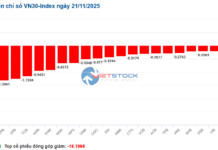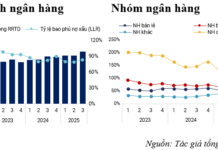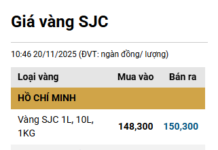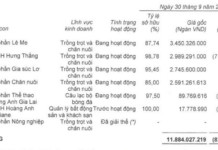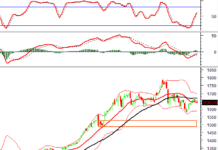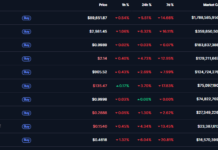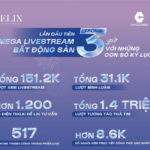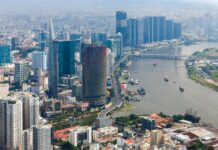
Illustrative image.
According to the draft Decree, the subjects of application include: Employees working under labor contracts as stipulated in the Labor Code; Employers as defined by the Labor Code (including: enterprises under the Law on Enterprises; agencies, organizations, cooperatives, households, and individuals who hire and employ workers under agreed terms); and other organizations, individuals, and relevant entities related to the implementation of the minimum wage stipulated in this Decree.
The following are the prescribed minimum monthly and hourly wage rates for employees working for employers across different regions:

The Ministry of Home Affairs stated that the above minimum wage rates represent an increase of VND 250,000 to VND 350,000 (an average ratio of 7.2%) compared to the current minimum wage.
This adjustment is approximately 0.6% higher than the minimum living standard of workers until the end of 2026, aiming to improve their living standards.
The adjustment strikes a balance between the interests of workers and enterprises, taking into account both the improvement of workers’ livelihoods and the maintenance and development of enterprises’ production and business activities.
The Decree stipulates four different minimum hourly wage rates for four regions: Region I – VND 25,500/hour, Region II – VND 22,700/hour, Region III – VND 20,000/hour, and Region IV – VND 17,800/hour.
According to the Ministry of Home Affairs, the minimum hourly wage continues to be determined based on the conversion method from the minimum monthly wage and the standard working hours as stipulated in the Labor Code. This method has been recommended by ILO experts and has been in use since 2022.
The minimum monthly wage is the lowest wage level used as a basis for negotiating and paying wages to employees who are employed under a monthly payment scheme. It ensures that the wage for a particular job or position is not lower than the minimum monthly wage for employees who work the standard number of hours per month and complete the agreed workload or tasks.
The minimum hourly wage is the lowest wage level used as a basis for negotiating and paying wages to employees who are employed under an hourly payment scheme. It ensures that the wage for a particular job or position is not lower than the minimum hourly wage for employees who work for one hour and complete the agreed workload or tasks.
The Decree clearly states that employers operating in a specific region shall apply the minimum wage rate prescribed for that region.
If an employer has branches or units operating in different areas with varying minimum wage rates, the branch or unit shall apply the rate corresponding to its respective region.
Employers operating in industrial parks or export processing zones located in areas with different minimum wage rates shall apply the rate of the region with the highest minimum wage.
In cases where the operating area undergoes a change in name or division, the employer shall temporarily apply the minimum wage rate of the previous area until the Government issues new regulations.
For employers operating in newly established areas comprising multiple regions with different minimum wage rates, the rate of the region with the highest minimum wage shall be applied.
This Decree is expected to take effect from January 1, 2026.
“Vingroup Completes a Top-10 World Wonder in Just 10 Months: The Power of Private Enterprise in Achieving the Unimaginable.”
Reviewing the recent transformations within the private economic sector, renowned economist Pham Chi Lan emphasized, “The most evident transformation that society witnesses is the bold initiative taken by a multitude of prominent private enterprises. These enterprises have actively engaged in key projects, ranging from central to local initiatives.”
“The Festival City: A Visionary Urban Model by Hoang Huy Group at the 2025 National Exhibition”
As part of the National Exhibition celebrating 80 years of Vietnam’s socio-economic achievements, Hai Phong will showcase its new urban planning direction. A key representative of this vision is the Hoang Huy New City project – a urban development model that aspires to become the new center for events and services along the Cam River.
The Archway of Fortune: A Glimpse at Quảng Ngãi Province’s First Steel Arch Bridge
After nearly three years of construction, the Trà Khúc 3 Bridge (Phước Lộc Bridge) with its unique steel arch design spanning the Trà Khúc River is finally complete and set to open to traffic tomorrow (August 19). This remarkable structure serves not only as a vital transportation link but also as a stunning architectural landmark for Quảng Ngãi, with its distinctive arch promising to become an iconic symbol for the region.
Celebrating 80 Years of Revolution: Techcombank Honors the August Revolution and National Day
As we proudly approach the 80th anniversary of the August Revolution and National Day of Vietnam (1945–2025), Techcombank is honored to support and celebrate the nation’s proud spirit, looking forward to a brilliant future together. We are thrilled to present a series of grand cultural and artistic events: ‘V Concert – Radiant Vietnam’, ‘V Fest – Radiant Youth’, an exhibition titled ’80 Years of Independence, Freedom and Happiness’, and a stunning 3D mapping show, ‘Hanoi Shining’. Join us as we commemorate this milestone and showcase the very best of Vietnam’s vibrant culture and arts.
The Livestream Trend in Real Estate: How Effective Is It, and Who Protects the Buyers?
The live-streaming wave of real estate sales is sweeping through the industry in the first months of 2025. But beyond the impressive view counts lie unanswered questions: What are the actual effects, and who will protect the buyers?

